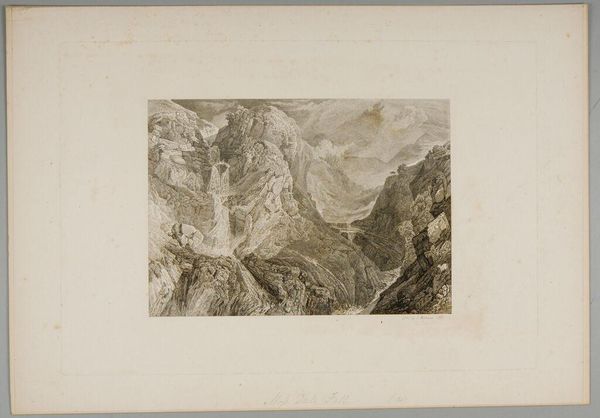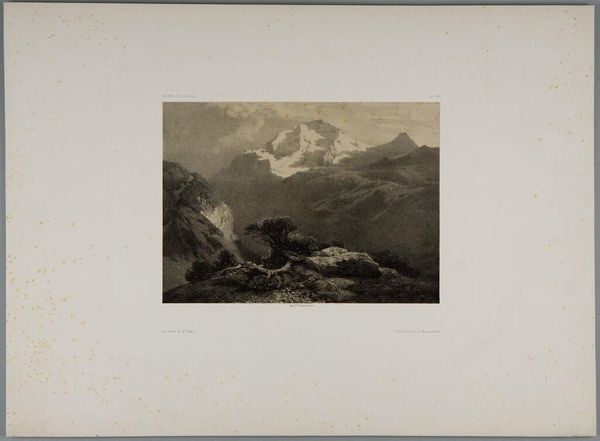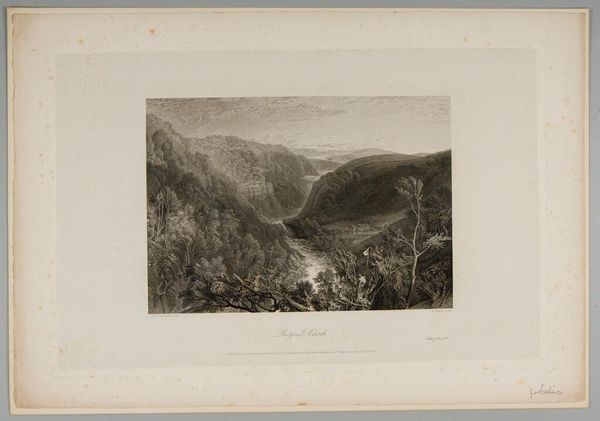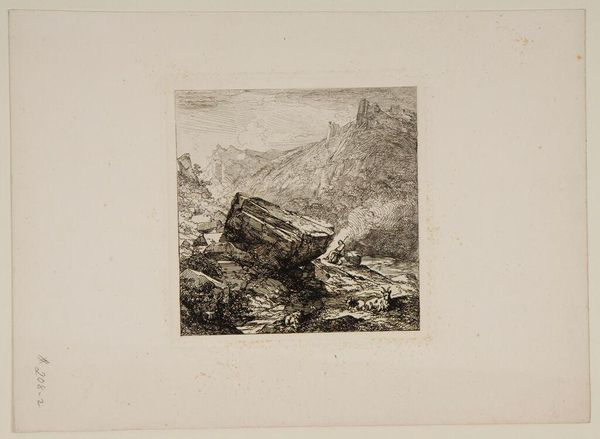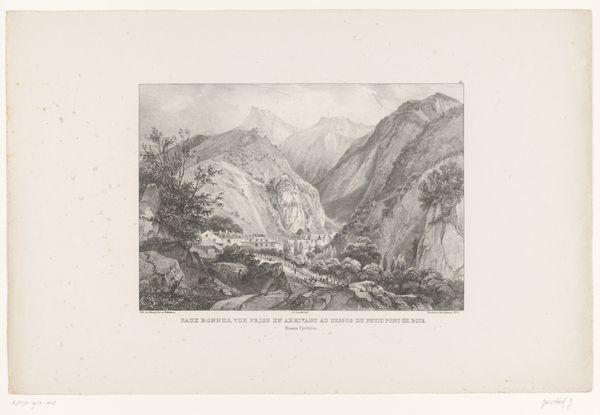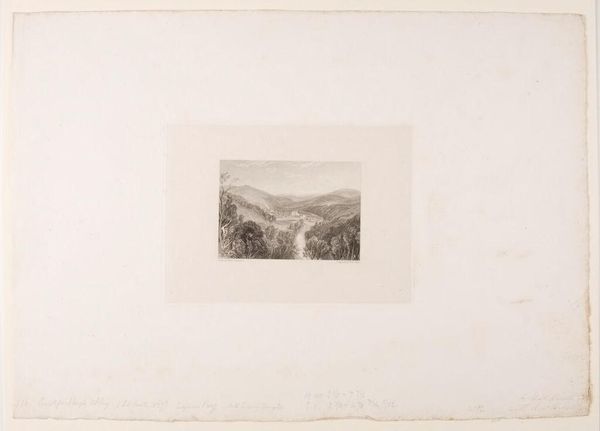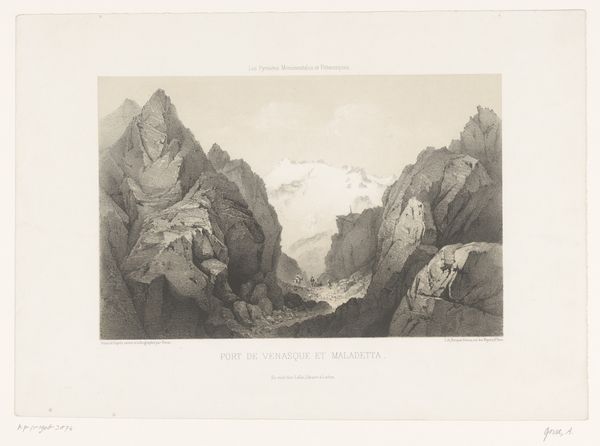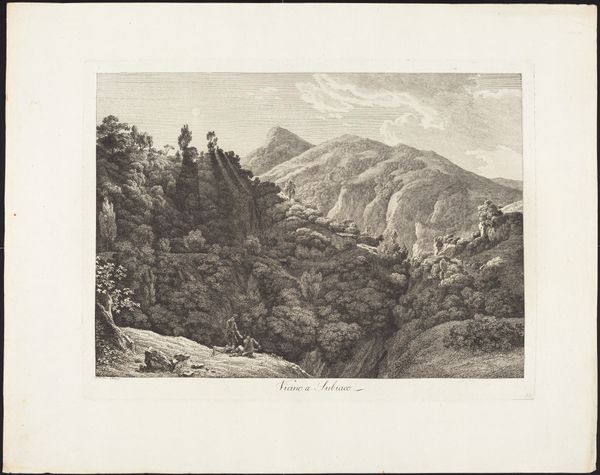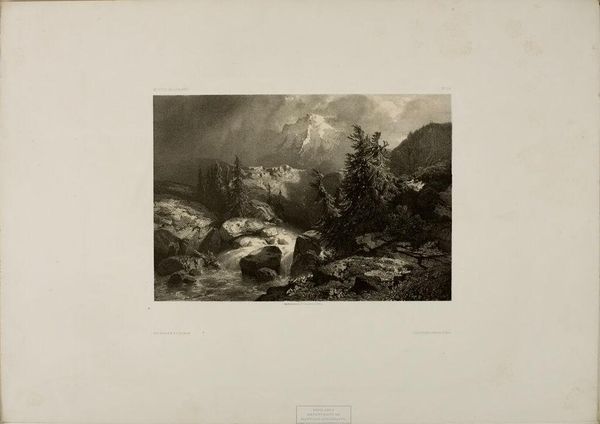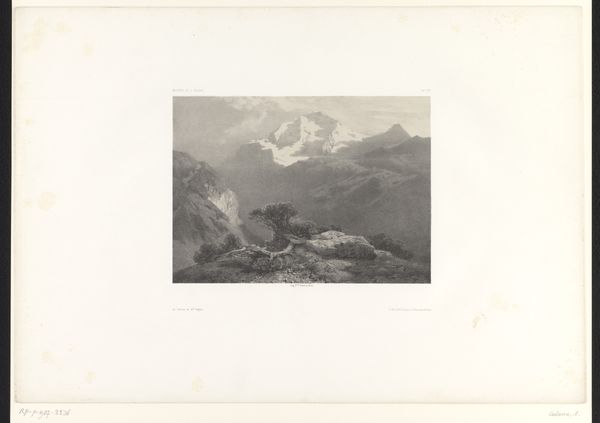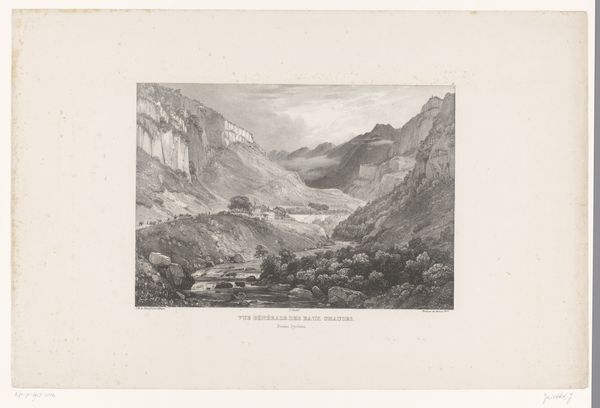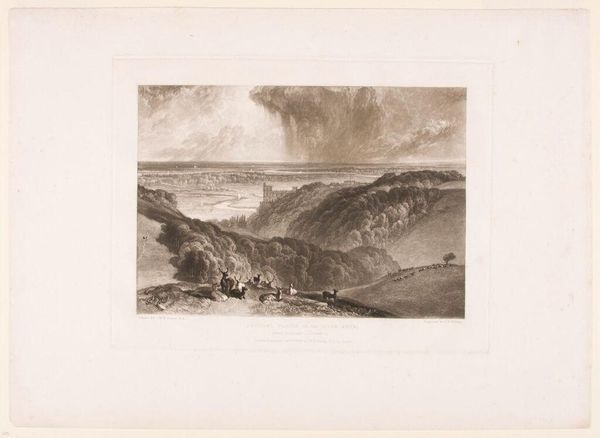
Copyright: CC0 1.0
Editor: This is Samuel Middiman's "Moss Dale Fall," created sometime around the late 18th or early 19th century. It's a monochrome print, and the landscape feels incredibly imposing. What do you see in this piece? Curator: The waterfall is a powerful symbol, often representing purification and the relentless passage of time. Notice how the artist uses light and shadow to create a sense of depth and drama. Does the scene remind you of similar imagery in literature or other art forms? Editor: I’m thinking of Romantic landscapes, like those by Caspar David Friedrich. There's a similar sense of awe and perhaps even a little fear in the face of nature's power. Curator: Precisely! This work taps into that cultural memory. The waterfall isn’t just water; it’s a manifestation of nature's sublime force. Consider how this image might have resonated with viewers during a time of rapid industrialization. Editor: That's a great point. It’s almost a reminder of something constant and untameable amidst all the change. Curator: Exactly. It’s about cultural continuity, and the enduring power of natural symbols. Editor: I never thought about it that way. I’m definitely seeing more depth now. Curator: Indeed, it’s a powerful reminder of how images carry so much symbolic weight.
Comments
No comments
Be the first to comment and join the conversation on the ultimate creative platform.
